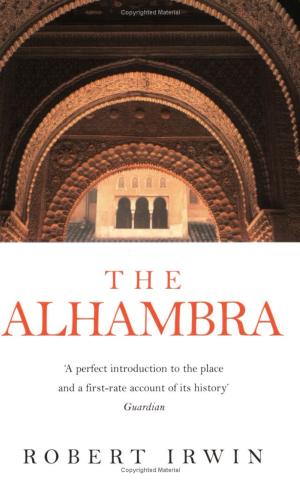The Alhambra by Robert Irwin

Author:Robert Irwin
Language: eng
Format: epub, pdf
Publisher: Profile Books
Published: 2004-03-10T16:00:00+00:00
THE PROPORTIONAL BUILDING
Recently the architectural historian and former Director of the Museum of Hispano-Muslim Art in the Alhambra, Antonio Fernández-Puertas, has argued that the men who built the two main palaces of the Alhambra ‘combined an incommensurable proportional system with the use of fixed Hispano Muslim units, called codos, based on the Roman pedes’ or foot. He refers to the Arab unit as the Rashashid codo. (However, the Rashashid codo approximates to 62 or 63 cm, whereas the Roman pes was only 29.6 cm. I do not know why it is called Rashashid. According to my Arabic dictionary, rashash means ‘spattered liquid’ or ‘dribble’.) The reason for thinking that the codo was the relevant unit is that this is the unit employed in a seventeenth-century Mudéjar manual on carpentry, Primera y sigunda parte de las reglas de la carpintería, by a certain López de Arenas. Mudéjar is the word used to refer to a Spaniard of Moorish descent, especially one who remained in Spain after 1492. The codo was certainly the unit of measurement employed in the eleventh-century Great Mosque of Cordoba and it has been shown to have been widely used in Muslim architecture throughout Spain.
As for the proportions, the sixth treatise in the encyclopedia of the Brethren of Purity was devoted to the moral value of proportion and the Brethren taught that beauty depended on ratios and proportions. According to Owen Jones (on whom more in the next chapter), ‘Those proportions will be the most beautiful which it will be most difficult for the eye to detect.’ Although there is evidence of complex geometry in most parts of the palaces of the Alhambra, the most systematic and detailed application of geometric patterning is in and round the Court of the Lions. As Fernández-Puertas notes, this was the only ‘palace’ to be designed by a single architect and built as a single unit within a single reign (that of Muhammad V). His exposition of the proportions of the Court of the Lions supersedes the earlier and more loosely argued theory propounded by the architectural historian Georges Marçais in the 1950s that the spacing of the arches and columns in the Court of the Lions was dictated by the golden mean, a proportional relation in which the ratio of width to length is the same as that of length to the sum of width and length. It is not clear that Muslim builders and designers ever made use of proportional relationships based on the golden mean.
Instead Fernández-Puertas argues that the grand design, as well as the detail of the court, was based on rectangles generated by square roots and surds. (A surd is an irrational number; for example, the square root of seven. The square root of seven is an irrational number in the sense that it is one that cannot be written as an integer, or whole number, or as the quotient of an integer. Pi is the most famous of the surds.) Throughout the Alhambra, builders and designers played with the ratios between irrational numbers and whole numbers.
Download
This site does not store any files on its server. We only index and link to content provided by other sites. Please contact the content providers to delete copyright contents if any and email us, we'll remove relevant links or contents immediately.
Kathy Andrews Collection by Kathy Andrews(10506)
The remains of the day by Kazuo Ishiguro(7542)
Spare by Prince Harry The Duke of Sussex(4188)
Paper Towns by Green John(4163)
The Body: A Guide for Occupants by Bill Bryson(3789)
Be in a Treehouse by Pete Nelson(3206)
Harry Potter and the Goblet Of Fire by J.K. Rowling(3025)
Goodbye Paradise(2949)
Never by Ken Follett(2872)
Into Thin Air by Jon Krakauer(2695)
The Remains of the Day by Kazuo Ishiguro(2614)
The Genius of Japanese Carpentry by Azby Brown(2602)
The Cellar by Natasha Preston(2592)
Drawing Shortcuts: Developing Quick Drawing Skills Using Today's Technology by Leggitt Jim(2528)
120 Days of Sodom by Marquis de Sade(2428)
Architecture 101 by Nicole Bridge(2348)
The Man Who Died Twice by Richard Osman(2289)
Machine Learning at Scale with H2O by Gregory Keys | David Whiting(2264)
Fairy Tale by Stephen King(2058)
